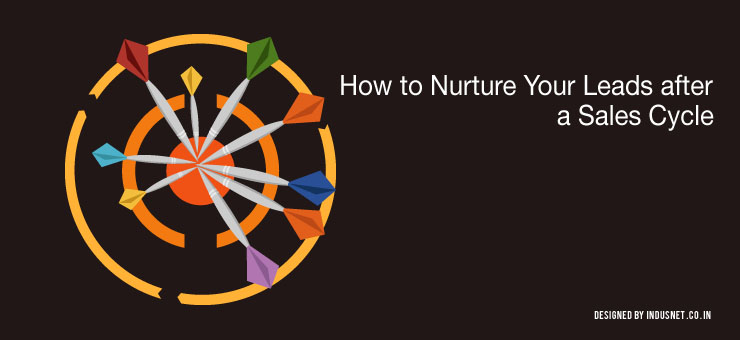
Lead nurturing can come in a number of forms and it does not always have to be before sales. When leads opt to choose a competitor or opt not to purchase anything at all, you can still continue to nurture a relationship with them, depending on the reason for not buying.
What is post-sales nurturing?
Post sales cycle nurturing is that aspect of lead nurturing when you continue to nurture even when the sales cycle has concluded. This helps your prospective leads to know that they probably need to buy your products and services anyway. By having a structured method to nurture leads, depending on the reasons they chose not to sign a contract, you can design a campaign that is uniquely optimized to get them to buy your products and services, probably much later.
All that you need to know is, why they opted out of your company and chose another or did not choose anything at all. In this article, we shall discuss post-sales lead nurturing campaigns from a B2B perspective, especially, in the domain of IT and marketing. We shall take a look at various scenarios in which businesses and companies choose not to sign contracts & we shall discuss what you can do to nurture such leads.
Companies that offer IT services never really lose a lead anyway. If they choose your competitor, give them a little time to experience buyer’s remorse. This is, usually, around the first month of purchase. This is the right time to focus on your strengths and your competitors’ weaknesses. Slowly, increase the number of communications that you send them and when their contract is coming to a close, you could directly ask if they would like to migrate to your products & services.
When your leads inform you that they chose not to purchase your products or services on account of money, just wait till the financial year comes to an end. That is, usually, the time when companies are tempted to spend on new products and services. If you have already nurtured them and you remain in their subconscious, they will most probably sign a contract with you. Try to contact them 2 months before a financial year ends so that they have enough time to make decisions.
Sometimes, companies are very small and do not have the necessary budgets to make financial commitments for B2B products and services. You could set up a Google Alert to check if they have begun to grow and if they do, you can immediately contact them & ask if they are interested in your business. Usually, companies that become prosperous are, usually, open to making B2B purchases rather easily.
When this is the case, ask them to subscribe to your blog and write terrific content that attracts them & encourages them to find value in what you offer. Your content needs to be geared at entertaining and informing, not at persuading blatantly. When companies make the mistake of writing blog posts that are directly persuasive in nature, they are no more blog posts. Instead, inform, educate and entertain your leads with effective content. They will respect what you have to offer.
Sometimes, much as you might be in denial, leads are just not interested in either your or your competitors’ products. You cannot badger them into reading your newsletters nor can you constantly send them tweets asking them to read your latest blog posts. Sometimes, respectful silence for a few months will help you more than anything else. Contact leads seem to be no more interested once in 3 months and then once in 6 months & then finally, once in a year. You might risk their annoyance if you contact them even after that. Always make sure that they have options to opt out of being contacted once and for all; and respect their decisions.
Nurturing your leads can help you to discover new clients without having to look any further. It will also help you to build healthy relationships that will last for a long time.